Narrative Elements Teaching Resources
Are you teaching narrative elements and looking for worksheets and activities to get students excited about tone, narration, plot and a host of other elements to writing a great story? Wondering how to engage primary students on the concept of character traits and make plot development as exciting as recess?
The English teachers on the Teach Starter team have done just that with a collection of printable worksheets and digital activities built around this core reading standard. Aligned with the Australian English curriculum, each narrative elements activity in this collection has undergone a careful review by a member of our teacher team to ensure it's ready for your lesson plans and your students.
Explore our teacher team's guide to learn more about the various narrative elements and how to bring them to life in your classroom!
Is this your first year teaching about these story elements? Or the first year in a while? Our teacher team has put together a quick refresher to get you ready to rock and roll in the classroom, including a way to explain what narrative elements are.
What Are Narrative Elements? A Kid-Friendly Definition
First thing's first: Let's talk about the definition.
Narrative elements are the basic components of writing that the author uses to share the story with the reader. Without them, the narrative falls apart!
They are sometimes referred to as story elements or literary elements. No matter what you call them, these elements give a piece of writing structure and help the author convey information to the reader.
On the reading side, literary elements are also key to breaking down a story to understand better what the author is trying to say.
What Are Examples of Narrative Elements? 8 Examples That Can Help Your Students
There are eight main examples of narrative elements that students will encounter in narrative texts:
1. Setting
This element is crucial for developing a story as it provides the time in which the story takes place as well as where it takes place. Setting helps ground the story.
2. Plot
The plot is the way a story unfolds. It's essentially a pattern for the text.
3. Conflict
Conflict helps move a plot forward as it offers the reader a climax to move toward as they read.
4. Characterisation
This element of writing covers the way characters are developed within a story.
5. Point of View
Also called narration, this literary element is the perspective from which a story is told, such as first person or third person.
6. Tone
The tone of a story can be boiled down to the author's attitude about the subject of the story.
7. Genre
Genre covers the type of story written, such as realistic fiction, science fiction or even magical realism.
8. Figurative Language
Similes, metaphors and onomatopoeia are just some examples of the figurative language students may encounter in a text.
- Plus Plan
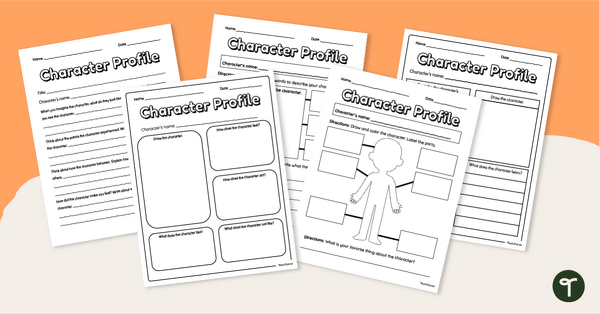
Character Profile Template Pack
Explore the personality, appearance, feelings and actions of a character from a narrative with this printable character profile templates.
- Free Plan
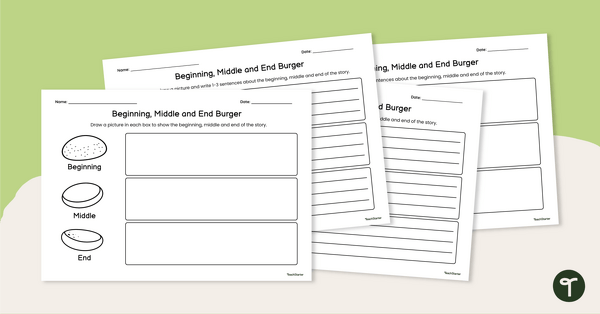
Story Beginning, Middle and End Graphic Organiser
Help your students write and draw about the beginning, middle and end of stories with this set of differentiated graphic organisers.
- Plus Plan
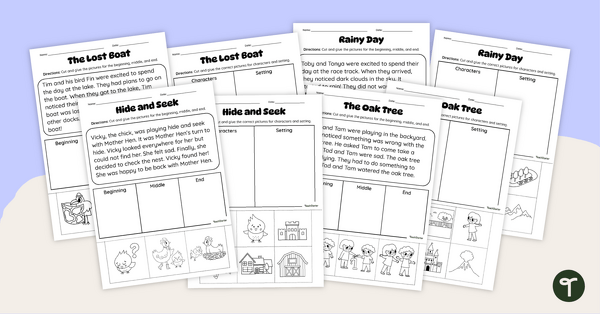
Beginning, Middle End Worksheets
Explore the main structure and story elements in a short story with these beginning, middle and end worksheets.
- Free Plan
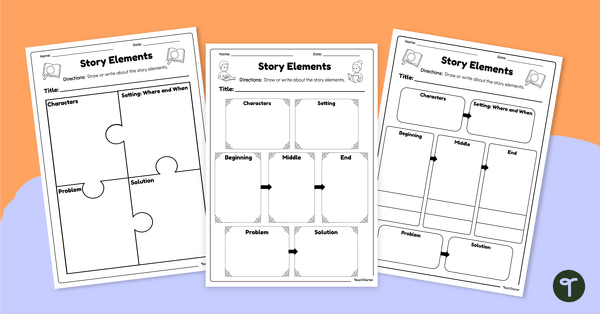
Narrative Elements Graphic Organisers – Portrait
Encourage your students to write and draw about various story elements with this set of differentiated graphic organisers.
- Plus Plan
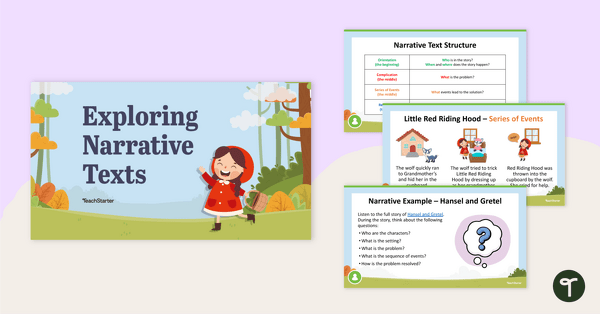
Exploring Narrative Texts PowerPoint
Teach your students about the key elements of narrative texts with this comprehensive teaching presentation.
- Plus Plan
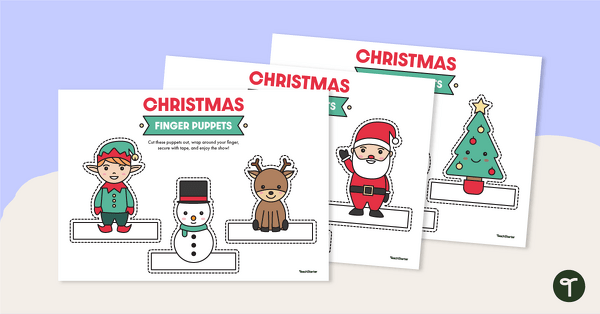
Christmas Finger Puppets Template
Craft a fun set of Christmas finger puppets for your students to have fun with during dramatic play.
- Free Plan

The Enigma of AX29 - Narrative Plot Worksheet
Explore the features of narrative plot structure with this gripping science fiction story.
- Plus Plan
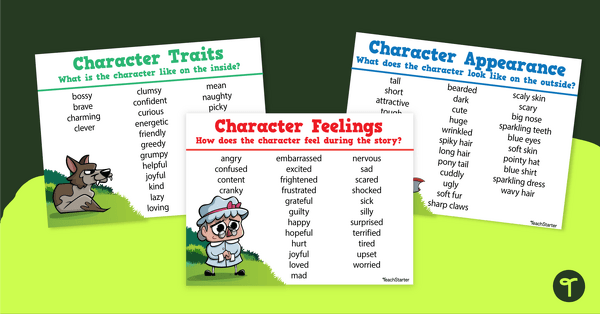
Character Traits, Feelings and Appearance - Posters
A set of 3 posters depicting words and phrases that can be used to describe a character's personality, feelings and appearance.
- Plus Plan

Story Retelling Strips
Explore a story with your students with this story-retelling cut-and-paste worksheet.
- Plus Plan
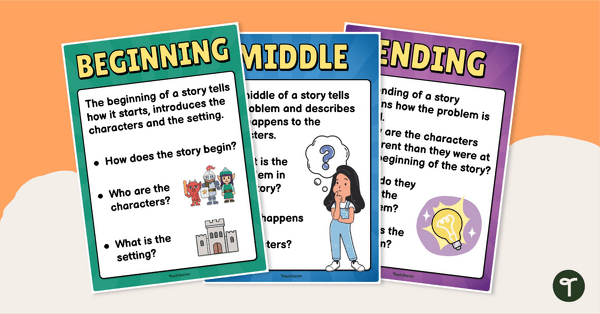
Beginning, Middle and End of Story Poster Set
Remind students of the elements that make up the beginning, middle and end of a story with this set of three posters.
- Plus Plan

Introduction to Narrative Features PowerPoint - Year 3 and Year 4
A 23 slide editable PowerPoint template to use when teaching your students about the features of narrative texts.
- Plus Plan
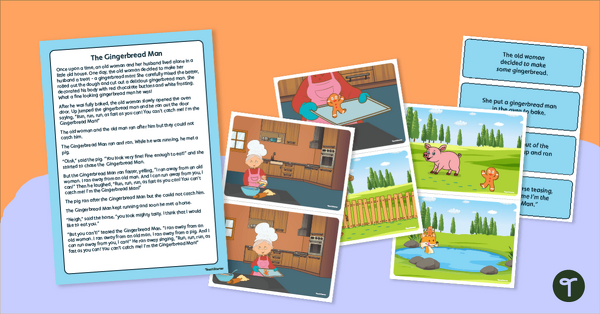
The Gingerbread Man Story Sequencing Cards
Teach your students about retelling with this set of printable gingerbread man story sequencing cards.
- Plus Plan
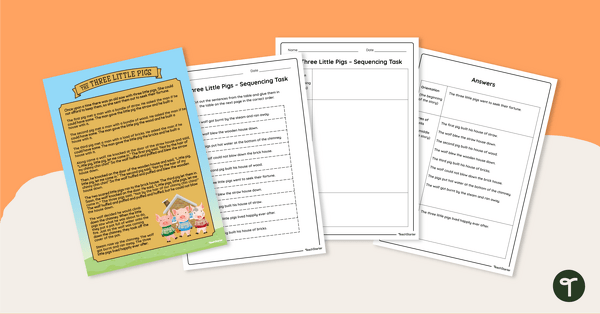
Three Little Pigs – Sequencing Worksheet
Identify the story beginning, series of events and ending with this narrative text sequencing activity.
- Plus Plan
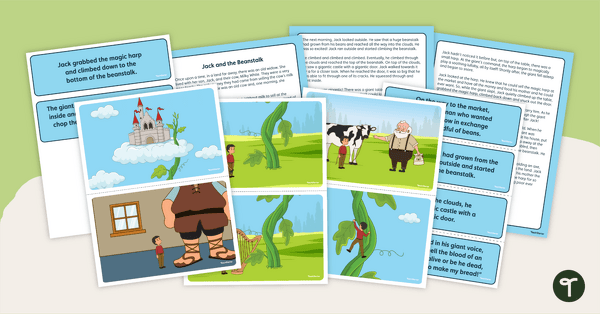
Jack and the Beanstalk Retelling Activity Cards
Teach your students about retelling with this set of sequencing cards for Jack and the Beanstalk.
- Plus Plan
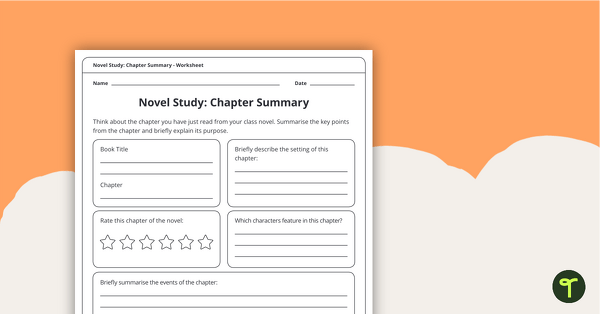
Novel Study – Chapter Summary Worksheet
Reflect on a chapter in a class novel using this one-page worksheet.
- Plus Plan
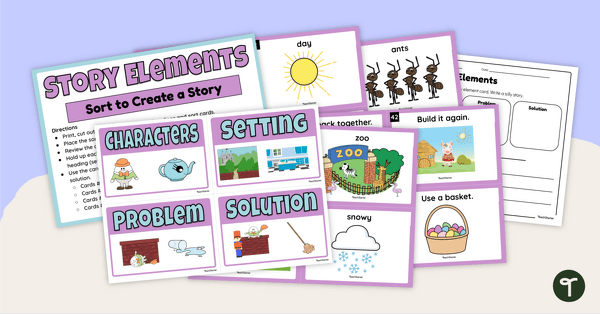
Create a Silly Story – Sorting Activity
Explore story characters, settings, problems and solutions by creating a silly story!
- Plus Plan
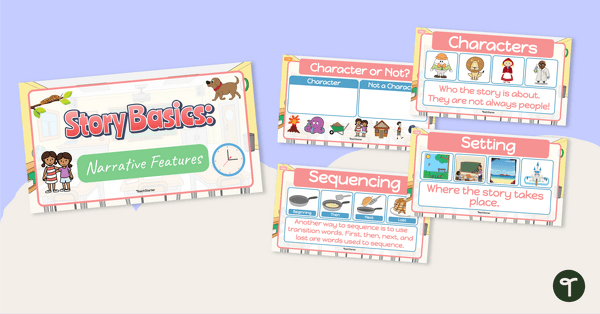
Story Basics: Narrative Features - Teaching Presentation
Use this interactive teaching presentation to introduce your early years students to the basic features of stories.
- Free Plan
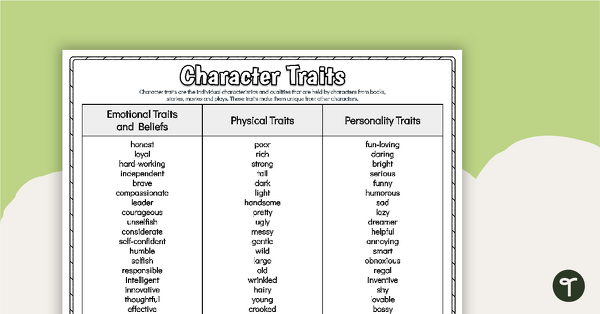
Free Character Traits List
Teach your students to analyse characters more effectively by providing them with a list of character traits.
- Plus Plan
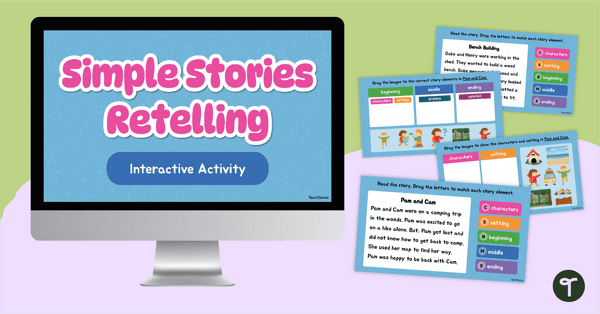
5 Elements of a Short Story Activity
Explore the 5 elements of a short story using this digital activity with five short stories.
- Plus Plan
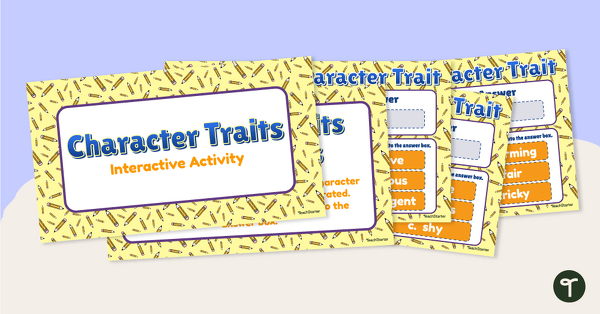
Character Traits Interactive Activity
Analyse text and identify character traits of characters with a Google Slides Interactive activity.
- Plus Plan

Reading Response Retelling Important Events– Template
A comprehension template for students to revise important parts of a text.
- Plus Plan
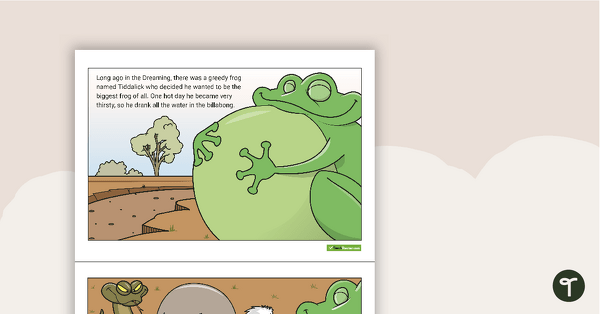
Tiddalick the Frog Dreaming Story Sequencing Activity Cards
Use these Tiddalick the Frog sequencing activity cards as a resource for teaching Australian Dreaming Stories.
- Plus Plan
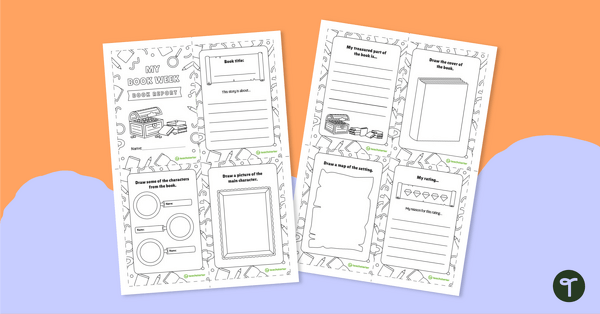
Book Report Mini Book
Have students write about their favourite literature with this fun-sized mini-book.
- Plus Plan

Exploring and Building Narrative Characters PowerPoint
A 14 slide editable PowerPoint template to use when teaching younger students about how to build a character for a narrative text.
- Plus Plan
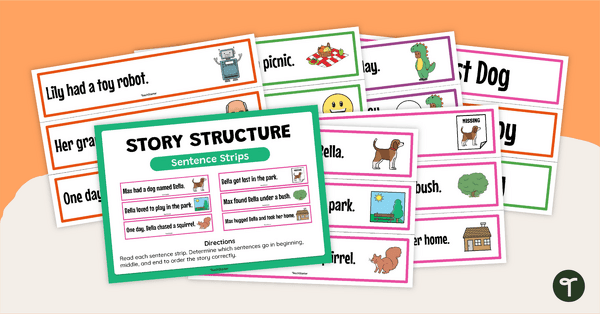
Story Structure Sentence Strips
Explore sentences that form the beginning, middle and end of 5 short stories with this sorting activity for younger year levels.
- Plus Plan
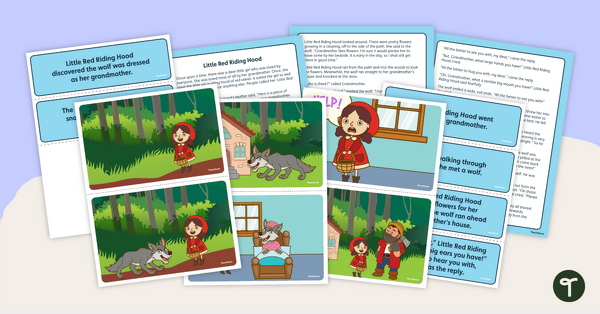
Little Red Riding Hood Retelling Activity Cards
Teach your students about retelling with this set of sequencing cards for Little Red Riding Hood.
- Plus Plan
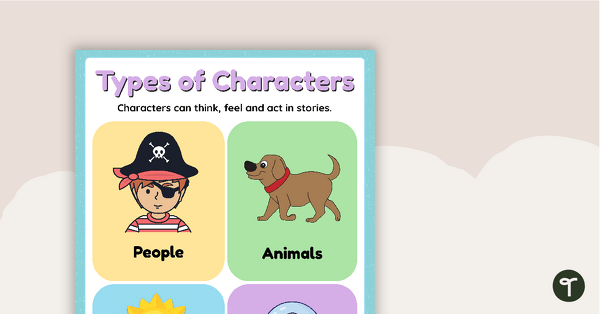
Types of Characters - Poster
Remind students about the types of characters that can be found in stories with this colourful classroom poster.
- Plus Plan
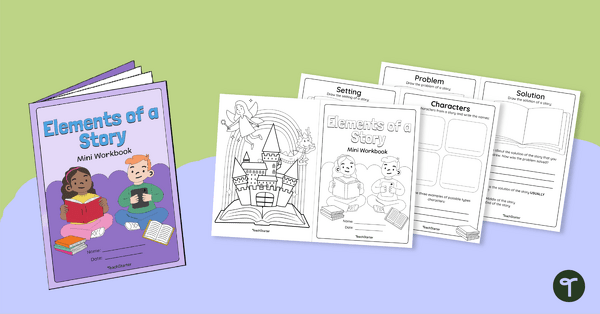
Elements of a Story Activity Workbook
Explore the different elements of a narrative story with this student mini workbook.
- Free Plan
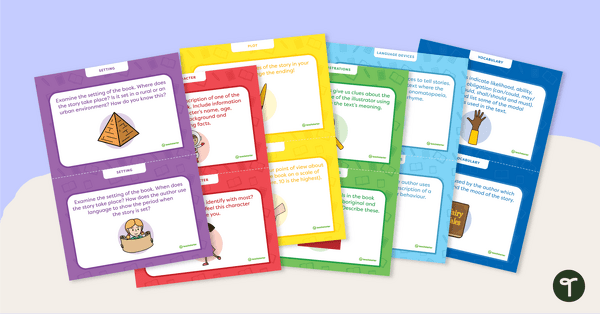
Literature Study Task Cards (Upper Primary)
Explore the wonders of children's literature with this set of 14 literature study task cards for upper primary students.
- Plus Plan
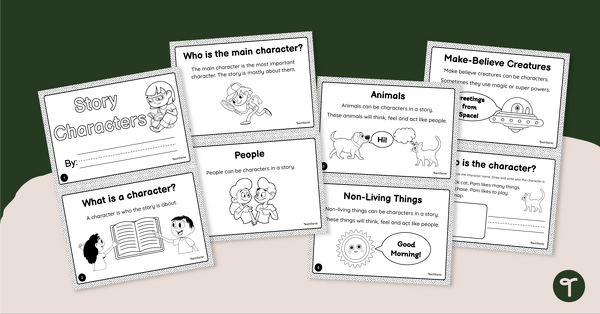
Story Characters - Mini Book
Teach your little learners about the various types of story characters with this fun-sized mini-book.
- Plus Plan
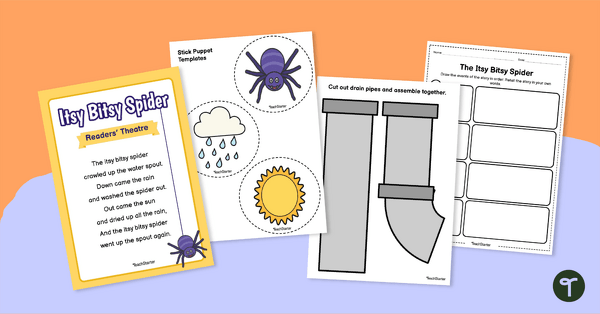
Readers' Theatre - Itsy Bitsy Spider Read and Retell Activity
Engage young readers in texts with a dramatic reading of “The Itsy Bitsy Spider” and accompanying story retelling activity.
- Free Plan
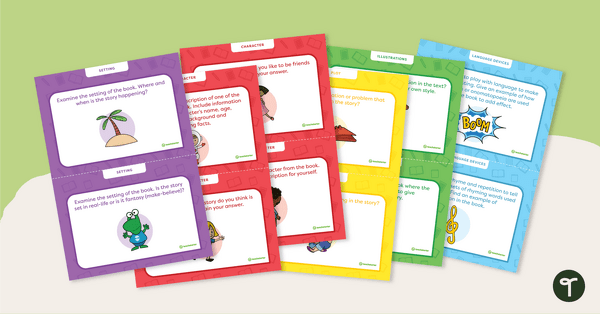
Literature Study Task Cards (Lower Primary)
Explore the wonders of children's literature with this set of 12 literature study task cards for lower primary students.
- Narrative Elements Worksheets
- Narrative Elements Templates
- Narrative Elements Teaching Presentations
- Narrative Elements Games
- Narrative Elements for Foundation Year
- Narrative Elements for Year 1
- Narrative Elements for Year 2
- Narrative Elements for Year 3
- Narrative Elements for Year 4
- Narrative Elements for Year 5
- Narrative Elements for Year 6